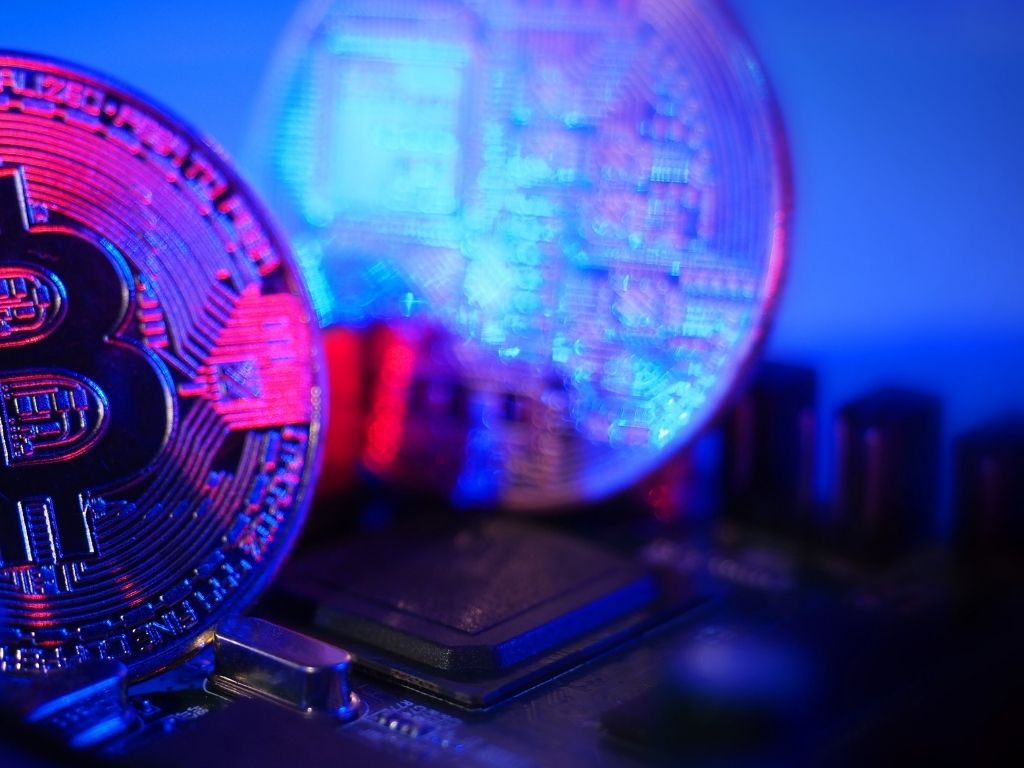Important Aspect Of The DAO Governance Model
How do DAOs matter in the blockchain industry? It’s interesting how the idea has suggested ways to realize the true potential of blockchain. With numerous actual DAOs or decentralized autonomous organizations as examples, discussions about the DAO governance model have recently gained considerable traction. You can learn about DAO governance and various governance models with the assistance of the debate that follows. The sudden increase of blockchain applications has raised significant buzz about the new distributed ledger technology. Blockchain, regarded as the cornerstone of cryptocurrencies, has since developed several cutting-edge products. Most importantly, blockchain has accelerated the movement towards decentralization through DeFi, NFTs, intelligent contracts, and dApps like never before.
Governance of DAO Definition
The definition of DAO governance is the first thing you should be aware of before moving on to recommended practices. The first cryptocurrency, Bitcoin, was released by Satoshi Nakamoto as a whitepaper about ten years ago. The concept of a decentralized, peer-to-peer payment system was included in the publication. The P2P currency system has evolved and offers additional features for enabling transactions without jeopardizing data security and integrity. Users have been worried about adopting new governance models in systems with numerous parties since the advent of blockchain. Blockchain essentially implies that consumers would be free from a centralized authority. You would have to establish clarity around governance at this point. The first DAOs, or Decentralized Autonomous Companies, as they were known at the time (DACs), appeared in 2013, giving rise to the Decentralized Autonomous Organization governance token. While entrusting cryptocurrencies as the company’s shares, the DACs had precisely specified laws and business norms in the source code.
Operation of DAOs
The description of DAOs makes the justification for DAO governance clear. DAOs, or decentralized autonomous organizations, differ significantly from the typical conditional transaction systems created and run by businesses for profit. Decentralized independent organizations are computer-based entities that function entirely autonomously, except for voting. Users, not any private company or person, are in charge of and can decide its future course of action.
Smart contracts, which specify the guidelines and conditions for conducting transactions, serve as the foundation for the governance of Decentralized Autonomous Organizations. By studying how Decentralized Autonomous organizations operate, you can precisely explain how DAO governance functions. The network’s blockchain would guarantee transparent documentation of all DAO rules and transactions.
The Humans Blockchain will have an AI DAO embedded within it, allowing users to vote for aspects ranging from model upgrades & training new AIs, to treasury decisions & ai governance triggers. #AImpossibleMerge #Blockchain #AI pic.twitter.com/d1g4hsDKiz
— humans.ai (@humansdotai) September 24, 2022
It is significant to remember that DAO governance exclusively depends on the members who make crucial decisions about the project’s destiny. Through a core group of community members, smart contracts assist in developing the DAO’s rule set. Any member could learn how the protocol operates at various times with the certainty of the available evidence, audits, and verification.
Organizations that are Decentralized and Autonomous
The overview of DAO governance is a valuable tool for those learning about decentralized authority for the first time. Before learning more about the typical DAO governance strategies, you need to become familiar with the various forms of DAOs. In actuality, having a solid understanding of the different Decentralized Autonomous Organization variants will help you comprehend a DAO governance model. It is important to remember that DAOs have multiple structures, technology, and goals, which can be very important when creating their governance models. Here is a summary of the many DAO types and their purposes.
DAOs for operating systems
Operating system DAOs are independent platforms that assist one or more businesses in developing their DAOs. Colony and Orca are two excellent instances of operating system DAOs.
DAO protocols
The protocol DAO is one of the most prevalent and well-liked Decentralized Autonomous Organization options. Most frequently, protocol DAOs would use a DAO governance token as a voting indicator to put the protocol into place and make necessary modifications. Yearn, Uniswap, and Curve are a few instances of protocol DAOs in action.
Financial DAOs
The following well-known example would be investment DAOs like BitDAO. Investment DAOs primarily help gather funds for investments in various DeFi and cryptocurrency projects.
A media DAO
One of the most well-known examples of how a data governance model based on intelligent contracts may bring about encouraging efficiency benefits is media Decentralized Autonomous Organization. The transparency and use cases of media clarify their main advantages. Decentralized news aggregators, which can serve customers’ interests, are one of the primary use cases for media Decentralized Autonomous organizations.
DAO collectors
Collector DAOs, a special DAO for NFTs and artists, would also be included in the list of many kinds. Collector DAOs can offer the necessary assistance for enabling full or partial ownership of artwork and material. Flamingo is one of the collector DAO samples.
A social DAO
Social DAOs are one of the best examples of governance platforms that you can find. Social Decentralized Autonomous Organizations are one of the significant governance models with DAOs and share a fundamental design with decentralized social networking networks.
Funds DAOs
Grants DAOs are decentralized venture capitalist communities that use governance tokens to decide how to allocate funds, as the name suggests. The Moloch DAO is one of Grants DAOs’ most well-known applications.
Also Read: All About Decentralized Autonomous Organizations (DAO Guide)
Different Models of DAO Governance
Explaining various forms could be a fundamental framework for comprehending DAO governance. Before delving into the multiple forms of DAO governance, you must first understand how they operate. The community members write the rules onto the blockchain after writing them in smart contracts. By providing funds and relying on governance, users can install a DAO.
What source does the money have? Users receive tokens from the DAO, which may be used to fund the treasury. Users who buy tickets are given voting rights under the DAO governance model. The Decentralized Autonomous Organization can prepare for deployment as soon as it gets the required cash. You cannot modify the intelligent contract once the code has been pushed into the production stage. On the other side, you can always try the chance of a member vote producing a consensus on specific improvements. You can find a few different governance models based on the straightforward method for working with decentralized autonomous organization governance. Let’s examine each governance model in detail, along with some real-world illustrations and justifications.
DAO Constitution
Constitution DAO is the first example of a DAO governance token that demonstrates the effectiveness of DAO governance. Constitution DAO enables users to pool resources and acquire shared ownership of assets using cryptocurrencies. The initiative started when a core group encouraged several other participants to buy a copy of the US Constitution. In the example of Constitution DAO, you can see the collector Decentralized Autonomous Organization governance model. It’s interesting to note that Constitution DAO, which was able to gather almost $47 million in ETH, got incredibly close to the final agreement. Even though the artifact sold for nearly $43.2 million, the auction house lowered Constitution Decentralized Autonomous Organization bid to cover other costs. These are considered taxes and the expense of keeping a copy of the Constitution. Despite its bankruptcy, Constitution DAO demonstrated the effectiveness of DAO governance in promoting group effort.
Benefits of Friends DAO
Friends with Benefits DAO, often known as FWB DAO, is the following frequently mentioned inclusion in discussions of a data governance template with governance. It is essentially a community of web3 enthusiasts with features like those of a decentralized social networking site. Friends with Benefits employs the FWB governance token to make user admission easier. The FWB DAO’s governance model utilized a straightforward kind of consensus-based governance. To communicate proposals and the necessary paperwork for formalizing the plans, it uses a multi-group governance approach through Discord. Additionally, Snapshot is used in the FWB DAO’s governance model for voting on various proposals.
JuiceboxDAO
Another well-known DAO governance platform that you want to know about right away is JuiceboxDAO. Through open, intelligent contracts on Ethereum, the unaudited platform enables various projects to solicit donations from the general public. The JuiceboxDAO governance model aids in constructing a fundraising website and a funding framework. The allocation of money and tokens among community members can also be determined with its aid. JuiceboxDAO’s governance style differs from other blockchains in that it seems more formal and centralized.
AOS ENS
The Ethereum Name Service Decentralized Autonomous Organization, a helpful for issuing ENS tokens to each registered Ethereum name, would be the last example of a governance mechanism. The ENS Decentralized Autonomous Organization illustrates a three-layered approach to DAO governance: first, the community discusses the ideas. Before the final vote is cast on the blockchain, ENS DAO then engages in off-chain voting via delegates.
Last Words
An accurate picture of how DAOs can affect change is given by the specifics of Decentralized Autonomous Organization governance and the value of the DAO governance token in the community. In the absence of DAOs, thousands of decentralized projects face the risk of being referred to as proxies for decentralization. The Decentralized Autonomous Organization restores control to the people, and governance demonstrates this. Thanks to the Decentralized Autonomous Organization governance, users are given voting privileges on significant proposals. Decentralized autonomous organizations are designed to meet a variety of goals and use cases at the same time. As a result, it is more probable that you will be perplexed by the many kinds and their governance mechanisms.
Stay informed with daily updates from Blockchain Magazine on Google News. Click here to follow us and mark as favorite: [Blockchain Magazine on Google News].
editor's pick
Get Blockchain Insights In Inbox
Stay ahead of the curve with expert analysis and market updates.
latest from tech
Disclaimer: Any post shared by a third-party agency are sponsored and Blockchain Magazine has no views on any such posts. The views and opinions expressed in this post are those of the clients and do not necessarily reflect the official policy or position of Blockchain Magazine. The information provided in this post is for informational purposes only and should not be considered as financial, investment, or professional advice. Blockchain Magazine does not endorse or promote any specific products, services, or companies mentioned in this posts. Readers are encouraged to conduct their own research and consult with a qualified professional before making any financial decisions. The featured image used is just a creative depiction of the title and it does not intend to hurt sentiments of any person or institution. If it hurts anyone sentiments, please do not hesitate to reach out to Blockchain Magazine.

 Bitcoin
Bitcoin  Ethereum
Ethereum  XRP
XRP  Tether
Tether  Solana
Solana  USDC
USDC  Dogecoin
Dogecoin  Cardano
Cardano  Lido Staked Ether
Lido Staked Ether  TRON
TRON  Wrapped Bitcoin
Wrapped Bitcoin  Chainlink
Chainlink  Wrapped stETH
Wrapped stETH  Avalanche
Avalanche  Sui
Sui  Stellar
Stellar  Litecoin
Litecoin  Toncoin
Toncoin  Shiba Inu
Shiba Inu  Hedera
Hedera  LEO Token
LEO Token  USDS
USDS  Hyperliquid
Hyperliquid  Polkadot
Polkadot  WETH
WETH  MANTRA
MANTRA  Bitcoin Cash
Bitcoin Cash  Bitget Token
Bitget Token  Ethena USDe
Ethena USDe  Wrapped eETH
Wrapped eETH  Uniswap
Uniswap  Monero
Monero  NEAR Protocol
NEAR Protocol  Pepe
Pepe  WhiteBIT Coin
WhiteBIT Coin  Ondo
Ondo  Aave
Aave  Bittensor
Bittensor  Aptos
Aptos  Dai
Dai  Internet Computer
Internet Computer  Official Trump
Official Trump  Mantle
Mantle  Ethereum Classic
Ethereum Classic  OKB
OKB  Tokenize Xchange
Tokenize Xchange  Gate
Gate  sUSDS
sUSDS  Coinbase Wrapped BTC
Coinbase Wrapped BTC 



